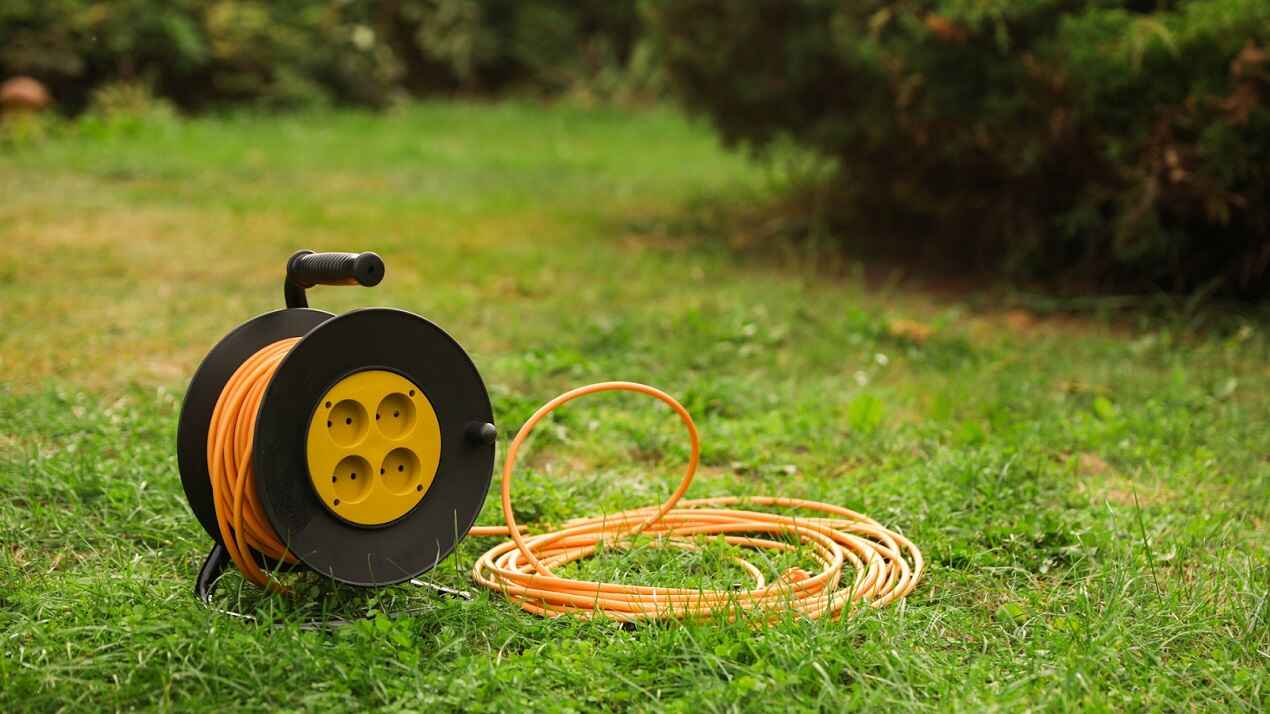When you need to power a leaf blower, string up patio lights, or set up a sound system for a backyard party, an extension cord is the go-to solution. However, not just any cord will do. Using the wrong type of extension cord outdoors can create serious safety risks, from equipment damage to electrical shocks and fires. Understanding the essentials of outdoor power can keep your home and family safe.
Indoor vs. Outdoor Cords: More Than Just Color
It’s easy to assume all extension cords are created equal, but there are critical differences between those designed for indoor and outdoor use. An outdoor extension cord is built to withstand the elements. It features a thick, durable jacket made of rubber, plastic, or vinyl that protects the internal wires from moisture, extreme temperatures, and UV rays that can cause cracking and degradation.
Indoor cords, on the other hand, have much thinner insulation. They are not designed to resist moisture or sunlight. Using one outside, even temporarily, can lead to a rapid breakdown of its protective covering, exposing the wires and creating a dangerous situation. Always check the cord’s packaging or tag for a “W” rating, which indicates it is approved for outdoor use.
Understanding Power Ratings and Why They Matter
Every extension cord has a specific power rating, which determines how much electricity it can safely handle. This rating is based on two key factors: its gauge (wire thickness) and length. The American Wire Gauge (AWG) system is used to measure this, and it’s a bit counterintuitive—a lower AWG number means a thicker wire that can carry more power.
For example, a 16-gauge cord is suitable for light-duty tasks like powering holiday lights, while a heavy-duty 10- or 12-gauge cord is needed for power-hungry tools like circular saws or air compressors. Using an undersized cord for a high-power device can cause it to overheat, melt, and potentially start a fire. Always match the cord’s rating to the power requirements of the tool or appliance you’re using.
The Critical Role of GFCI Outlets
When using electricity outdoors, the risk of electrical shock increases due to the presence of water from rain, sprinklers, or morning dew. This is where a Ground Fault Circuit Interrupter (GFCI) outlet becomes essential. A GFCI is a fast-acting device that constantly monitors the flow of electricity. If it detects even a tiny imbalance like electricity flowing through a person instead of its intended path it instantly shuts off the power, preventing a serious or fatal shock.
Modern building codes require GFCI outlets for all exterior electrical receptacles. If your home is older and lacks them, you can use a portable GFCI adapter that plugs directly into a standard outlet. Never plug an outdoor extension cord into an unprotected outlet.
Powering Your Holiday Lights Safely
The holiday season often involves an intricate web of extension cords to power dazzling light displays. This is where proper load balancing becomes crucial. Connecting too many light strands to a single cord or outlet can overload the circuit, causing breakers to trip or, worse, the cords to overheat.
Professionals who handle tasks like a Burr Ridge holiday lights installation meticulously calculate the total power draw of all connected lights. They strategically distribute the load across multiple circuits and use appropriate heavy-duty, outdoor-rated cords to ensure the system runs safely and efficiently. By following their lead and paying attention to power limits, you can ensure your festive display is a source of joy, not a hazard.
Conclusion
Using outdoor extension cords properly is essential for keeping your home and family safe. Always choose cords rated for outdoor use, paying close attention to power ratings and the demands of your tools or lighting. Don’t overlook the importance of GFCI outlets for outdoor protection, and take time to balance electrical loads when installing extensive displays like holiday lights. By staying informed and cautious, you can enjoy the convenience and beauty of outdoor power without the risks.

